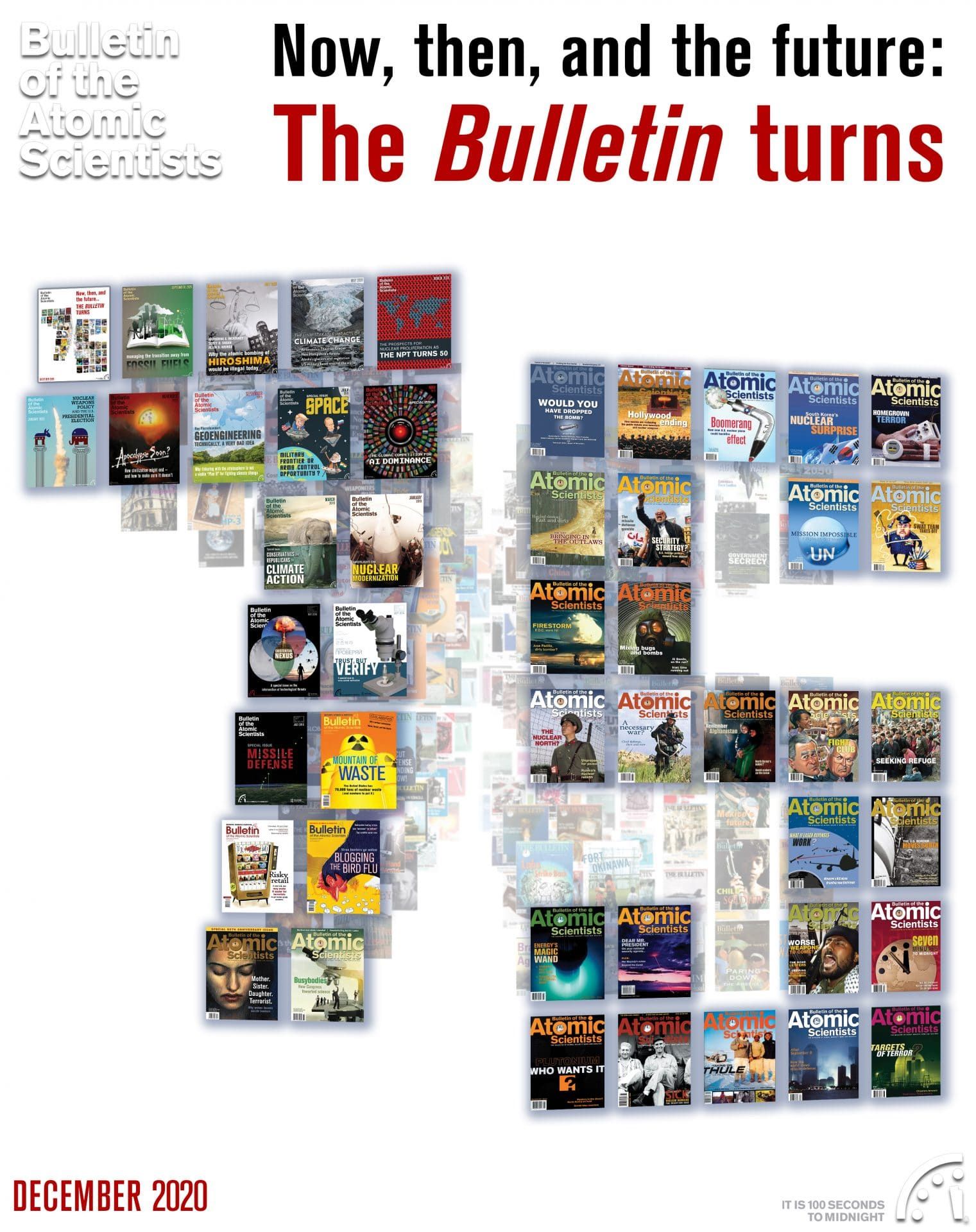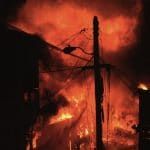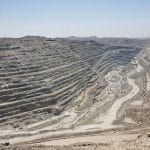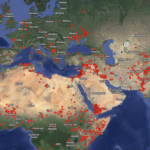1978: Is mankind warming the Earth?
By William W. Kellogg | December 7, 2020
1978: Is mankind warming the Earth?
By William W. Kellogg | December 7, 2020
Editor’s note: This article was originally published in the February 1978 issue of the Bulletin. It is republished here as part of our special issue commemorating the 75th year of the Bulletin.
It is a human tendency to cling to the belief that the natural environment or climate to which we have become accustomed will remain more or less the same from year to year and from decade to decade. We are surprised and alarmed when an unusually severe winter or an unusually prolonged drought occurs, because our “tribal” memories tend to be too short to recall past years when things were equally unusual. Furthermore, the dim history of periods at the dawn of civilization, when it was considerably warmer or colder for thousands of years on end, have not survived at all as a tribal memory. That longer record is still being laboriously reconstructed.
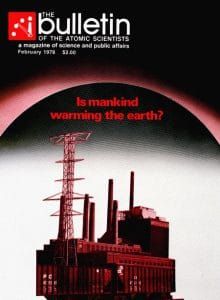 The facts are, of course, that climate everywhere does fluctuate quite noticeably from year to year and that there are gradual changes in climate that make one decade or one century different from the one before. These yearly fluctuations and longer-term changes have been the result of natural processes or external influences at work on the complex system that determines the Earth’s climate. It is a system that seems to strive for an uneasy balance among atmosphere, oceans, land and polar ice masses—all prodded by possible solar and cosmic variations of which climatologists are only dimly aware. It now appears though that we ourselves are becoming another significant factor in the climatic balance.
The facts are, of course, that climate everywhere does fluctuate quite noticeably from year to year and that there are gradual changes in climate that make one decade or one century different from the one before. These yearly fluctuations and longer-term changes have been the result of natural processes or external influences at work on the complex system that determines the Earth’s climate. It is a system that seems to strive for an uneasy balance among atmosphere, oceans, land and polar ice masses—all prodded by possible solar and cosmic variations of which climatologists are only dimly aware. It now appears though that we ourselves are becoming another significant factor in the climatic balance.
It is no news, for example, that our larger midlatitude cities are both murkier and warmer than the surrounding countryside (particularly in winter) as a result of all the thermal and chemical pollution we add to the atmosphere (and to some extent because of the ability of groups of buildings to trap heat from the Sun)[1]. But it may come as a surprise to some that there is also good evidence [2] for increased summertime rainfall downwind from cities such as St. Louis, Chicago and Paris. Indeed, it is very likely that the industrialization of sizable regions, such as the eastern United States and Western Europe, has modified their climates in certain more subtle ways.
What about the Earth as a whole? Is it possible for mankind to change the heat balance (and hence the climate) of the entire global climate system in any significant way? The answer is, I believe, an unqualified “yes.”
We are not yet certain about the magnitude of the climate change that mankind will bring about or its exact timetable, and there are many important implications of the change that are still merely food for speculation. Nevertheless, it is possible now to sketch a rough scenario of the anthropogenic changes that will probably occur in the next few decades—changes that (as will be shown) are likely to constitute a warming trend that will overshadow any natural changes that could be expected on the basis of the statistics of the climate record of the past few thousand years [3]. The practical significance of such a statement is self-evident.
The planet Earth receives energy radiated from the Sun, with more being absorbed in the tropics than in the polar regions. The overall temperature of the Earth is determined by a near-balance over the course of a year between the solar energy that is absorbed and the infrared energy radiated to space by the surface, clouds, and the atmosphere itself. Some atmospheric trace gases are especially good absorbers and emitters of infrared radiation, which will be an important consideration here.
At low latitudes there is an excess of warming because the solar energy absorbed is greater than the infrared energy emitted, and at high latitudes the reverse is true. The reason that the tropics do not continue to warm and the poles to cool down is, of course, that heat is transported by the atmosphere and the oceans from equator to pole. The atmosphere is, in a real sense, a kind of heat engine. We perceive the motion, or kinetic energy, of this heat engine as the wind patterns in the atmosphere and the great ocean currents.
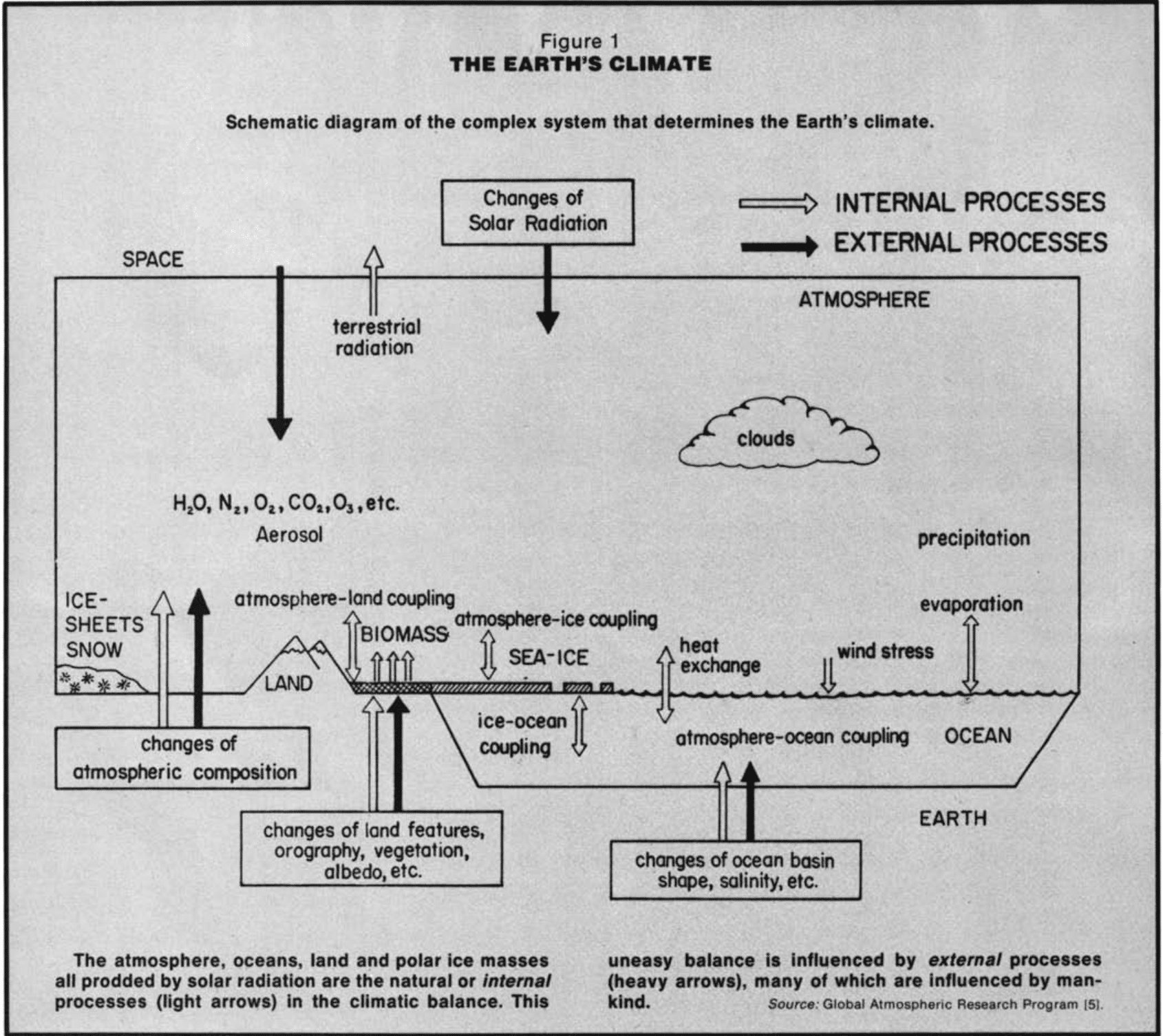
The system that determines the world’s climate, shown schematically in Figure 1, includes these radiative and dynamic interactions and many others as well. To understand the system better we can develop theoretical (mathematical) models of varying degrees of complexity. Some include as much physics as computers and human ingenuity will permit and in others we must resort to reasonable assumptions and simplifications about some of the interacting parts [4].
Modeling the atmosphere—the main “working fluid” of the heat engine—has been pursued vigorously for a number of years at such centers of meteorological research as the National Center for Atmospheric Research (sponsored by the National Science Foundation), the Geophysical Fluid Dynamics Laboratory (a National Oceanic and Atmospheric Administration laboratory), the Goddard Institute for Space Studies and the Goddard Space Flight Center (National Aeronautics and Space Administration laboratories), the Lawrence Livermore Laboratory (sponsored largely by the Department of Energy), and a handful of universities, notably the University of California at Los Angeles and Oregon State University. The development of general circulation models (GCMs) of the atmosphere has usually been a long-term team effort requiring access to a large computing facility. A leading non-U.S. center of GCM development is the British Meteorological Office in Bracknell.
In spite of the effort that has been spent on general circulation models of the atmosphere, these models are still inadequate as climate models. They are deficient because:
- they do not include the complex interactions that take place in the real world between atmosphere and oceans (ocean circulation modeling still lags far behind atmospheric modeling),
- they do not simulate the behavior of clouds well enough, and
- they treat the changing snow cover and sea ice at high and middle latitudes inadequately [5].
Nevertheless, GCMs and a hierarchy of somewhat simpler climate models do appear to simulate the behavior of the atmosphere remarkably well, showing approximately the right change of surface temperature (for example) with latitude and, in some cases, with the shift from summer to winter—a shift that corresponds in most respects to as large a “climate change” as we are likely to encounter in the foreseeable future.
Climate Predictions
If we are able to model the atmosphere and other parts of the climate system shown in Figure 1, then why not predict the weather further ahead than we do? Or why not even predict next year’s weather and climate? The reason we cannot is primarily a result of the random element of day-to-day fluctuations, an element that makes a time dependent GCM calculation depart progressively from reality as the calculation proceeds, so that it fails as a useful forecast tool beyond 4 or 5 days [5].
There have been claims of being able to make forecasts a season or even a year or more ahead, on the basis of presumed periodicities in the weather record or on tentative theories of the forcing effect of ocean surface temperature anomalies or solar activity changes or even the small wobble of the Earth’s axis of rotation. However, only modest skill (at best) has been demonstrated so far in such extended range predictions.
This sort of prediction of weather and climate due to natural processes should not be confused with a second kind of climate prediction in which we predict the course of a certain external influence on the Earth’s atmosphere (notably atmospheric carbon dioxide content), and then we simulate the response of the climate system to this changing influence by means of our hierarchy of climate models. This is a successful prediction to the extent that we can predict the changing influence (carbon dioxide) and to the extent that our models respond like the real atmosphere.
We have dwelt on the matter of climate modeling and climate predictions of the second kind for two reasons. First, there is a growing consensus among the climate modelers that, in spite of all the current model shortcomings, these models can probably be expected to respond in approximately the same way as the real system to a change of some external condition that changes the heat balance. And, second, we should realize that any conclusions we draw from experiments with them must have a degree of uncertainty.
There are a few highly respected scientists in the meteorological community who maintain that we should not publish any conclusions about the response of the climate to anthropogenic influences until we have done more homework on the models. I happen to disagree with such a conservative and noncommunicative attitude because the stakes are so great, the issues so fundamental to the future of society and most of all because some decisions are upon us that depend on every scrap of insight we can muster.
Estimating Mankind’s Influence
We turn now to the leverage points where mankind may be able to exert an influence and alter the heat balance or climate on a global scale. It seems incredible at first that human beings could have any real influence on such an enormous system as that which determines climate, but it now seems that we can [1].
A detailed discussion of all the things we do that may change our environment is beyond the scope of this article (the interested reader may consult some of the references cited [1, 3]), but the more important ones are summarized in the table. I will discuss in particular the gases that absorb infrared radiation.
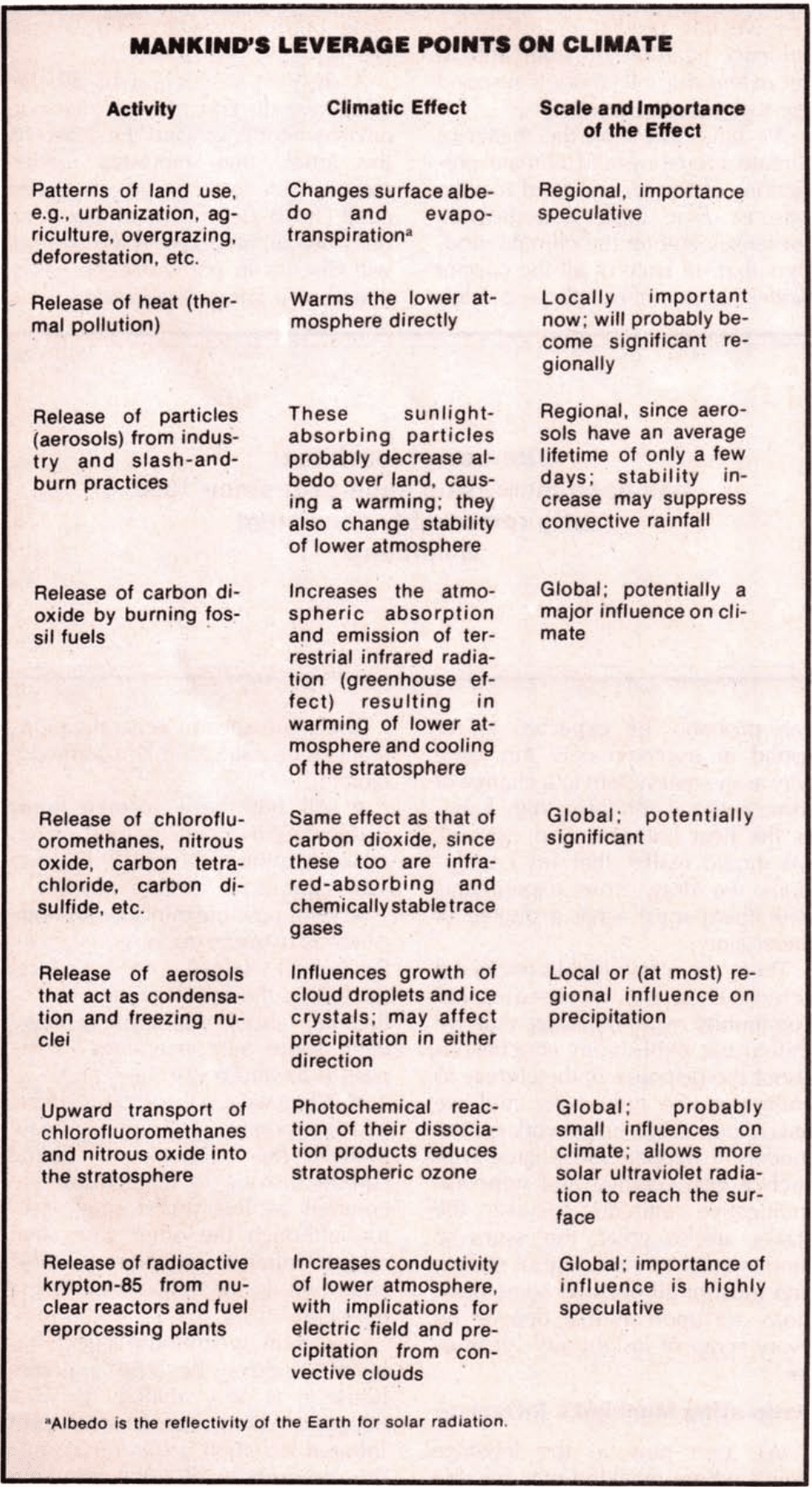
There are several generalizations that can be made from this summary table:
- All but the last three items derive their influence primarily from a modification of the heat balance of some part of the climate system,
- With possible minor exceptions (such as overgrazing of grasslands), the overall tendency of these effects (including the industrial aerosol influence, about which there have been some misconceptions in the past) is toward a warming, and
- When we test the various effects by experiments with our climate models, the influence of adding carbon dioxide to the atmosphere emerges as the largest single factor, although the other gases that absorb infrared radiation [6] also contribute to the added greenhouse effect [3].
The term greenhouse effect has been criticized because a greenhouse is a poor analogy to what happens when a gas that absorbs infrared radiation is introduced into the atmosphere. But the term has become a part of the vernacular now and might as well be retained.
The Earth’s surface, whether land or water, emits infrared radiation, half of it in the wavelength interval between about 9 and 17 micrometers, where the atmosphere is for the most part quite transparent—the spectral interval called the “atmospheric window.” However, carbon dioxide has a strong absorption band at about 15 micrometers, right in the window, and chlorofluoromethanes and nitrous oxide also happen to have absorption bands in the window. Thus, increasing the concentrations of these trace gases has the effect of reducing the transparency of the window to the infrared radiation from the Earth that would otherwise escape to space, and increasing the infrared radiation downward from the atmosphere. This results in a warming of the surface and a corresponding cooling of the stratosphere to keep the net outgoing infrared radiation at the top of the atmosphere constant [7].
That carbon dioxide concentration has in fact been steadily increasing since the Industrial Revolution as a result of the burning of fossil fuels (coal, petroleum, natural gas) can be seen in Figure 2. The best-documented period started in 1958 with the well calibrated and more-or-less continuous measurements by C. D. Keeling and his associates, made at the Mauna Loa Observatory in Hawaii [8], but it can be seen that the same trend has been measured at other stations from Point Barrow, Alaska, to the South Pole.
According to U.N. statistics, the use of fossil fuel has been increasing each year, since 1860, at a remarkably constant 4.3 percent if we neglect the slumps during World Wars I and II and the Great Depression of 1927-35 [9]. If the known production of carbon dioxide is compared to the observed atmospheric increase, it turns out that roughly one-half of the added carbon dioxide has remained in the atmosphere.
Where did the other half go? Undoubtedly the oceans of the world are a sink for carbon dioxide, but during this 100-year interval only the upper layers (the top several hundred meters on the average) of the ocean can have come into a chemical near-equilibrium with the atmosphere, due to the very slow mixing that occurs between these well-mixed upper layers and the much larger volume of the deep ocean below the thermocline. Estimates of the ability of the ocean to continue to take up carbon dioxide, if we continue to produce it at an exponential rate, suggest that the fraction that the ocean can absorb will become somewhat less than 50 percent in the decades ahead [10].
Furthermore, if we were to suddenly stop adding carbon dioxide (a highly unlikely happening), it would take from 1,000 to 1,500 years for the added amount already in the atmosphere to decay to one-third, according to current estimates of the exchange rates between the deep ocean and the mixed upper layers. Since the ocean contains 50 or 60 times more carbon dioxide than the atmosphere, it is potentially an enormous sink, but one with a very slow response time.
The other sink for carbon dioxide is the biosphere, consisting of all the living organic matter on the land and in the oceans. Trees constitute the largest mass of the biosphere, so a great deal of attention has recently been directed to the questions:
Are the forests of the world growing progressively faster as a result of the increased atmospheric carbon dioxide, which stimulates plant growth?
Or are the forests of the world being cut down for lumber and firewood faster than they are growing?
The answers to these questions are obviously crucial to any estimate of future carbon dioxide concentrations in the atmosphere.
A major conclusion of an authoritative panel devoted to predicting future carbon dioxide concentrations was as follows:
Complicating the picture … are various land-use practices, which some suggest are reducing the size of the biosphere. Others dispute this, … claiming the biosphere must be growing slightly. Until this point is settled, confidence in the models used to predict future carbon dioxide levels in the air will be minimal [11].
That is, unfortunately, where the matter stands—but a major problem has at least been defined and work has begun to solve it.
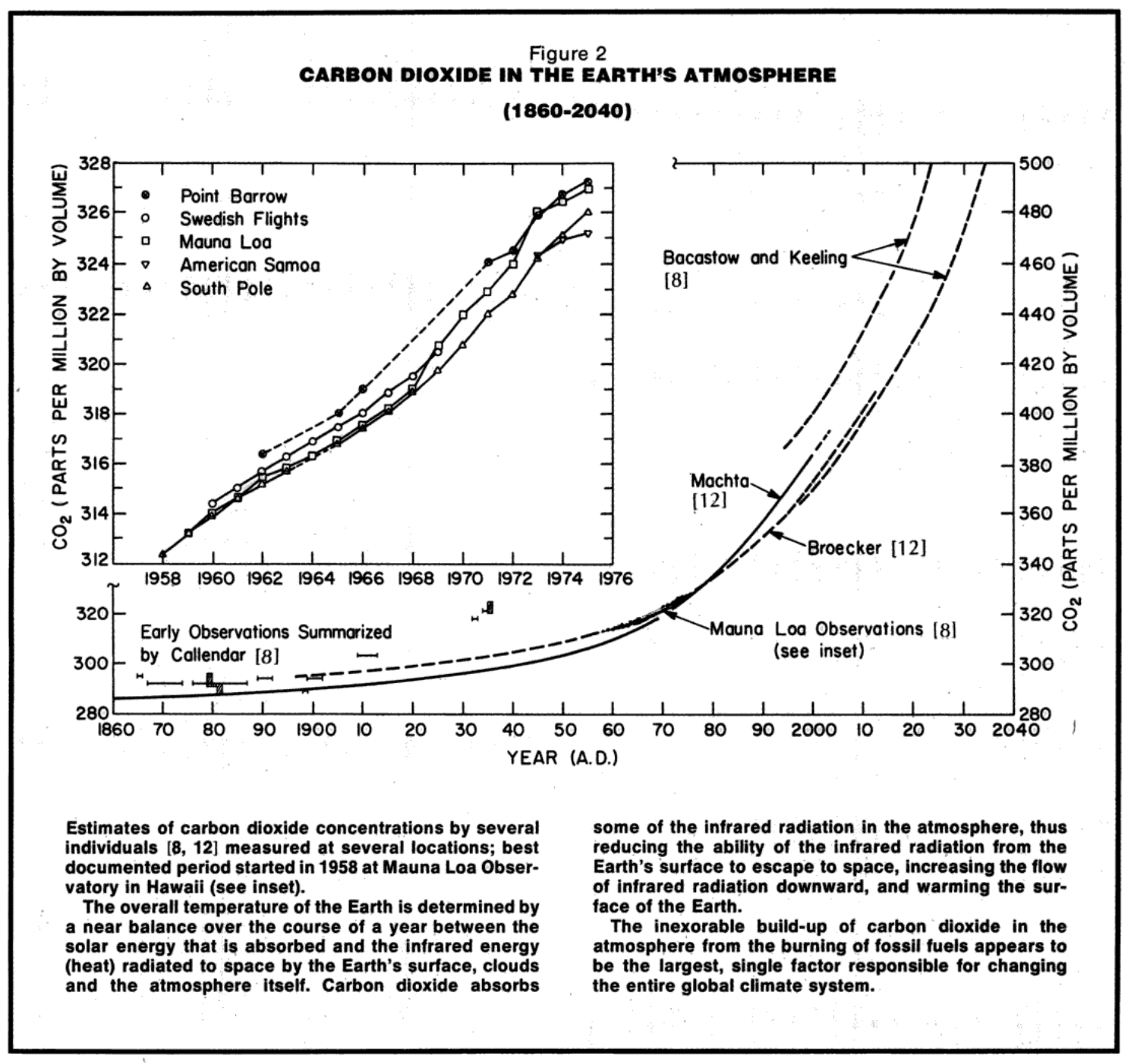
In Figure 2, estimates of future carbon dioxide concentrations by several individuals [12] are generally based on the assumption of a continued exponential growth (3 to 4 percent per year) in fossil fuel use and on detailed considerations of oceanic and biomass take-up. However, one would arrive at approximately the same conclusions merely by assuming that half of the emitted carbon dioxide remains airborne.
Other studies have been made with different scenarios for fossil fuel use, such as cases in which a decision is made at some future time to drastically reduce fossil fuel consumption [9], and this obviously results in a slower growth of carbon dioxide content in the atmosphere.
A number of theoretical calculations have been made of the changes in radiative equilibrium and temperature corresponding to a given carbon dioxide increase, based on a variety of atmospheric models ranging from globally averaged one-dimensional models to two-dimensional latitude-dependent models with varying degrees of complexity to a three-dimensional model that includes a simplified ocean (an ocean that has no circulation and no heat capacity).
The results, after corrections are made for some errors or inconsistencies in some of the earlier calculations [13], turn out to converge on approximately the same conclusion. That is, an increase from the present 325 parts per million by volume (ppmv) of carbon dioxide to the 400 ppmv expected around the turn of this century will correspond to an average surface warming of about 1°C, and a doubling to around 650 ppmv will correspond to a warming of 2 to 3°C. The latter, as can be seen from Figure 2, could occur around 2050 A.D. if we continue on our present course. Furthermore, in the polar regions one would expect a warming some 3 to 5 times greater than the global average [14].
I hasten to add that these figures are all based on best estimates. There are enough uncertainties in the theoretical treatments and models to account for an error of about a factor of 2, although it should be confessed that we are even uncertain about our uncertainty. A consensus of the modeling community seems to be that we are probably “in the right ballpark.” However, there are those who, as I have mentioned, doubt that our models are good enough to make valid predictions of the second kind. We can decide to wait until the atmosphere has done the crucial experiment for us. But, can we afford to wait that long?
Implications of a Warmer Earth
So far we have dealt with the effect of carbon dioxide on average surface temperature. (The other infrared absorbing gases we add to the atmosphere will act to enhance the warming still further, but probably not by a large amount.) However, temperature is only one measure of the environment in which we live, and the wind patterns and regional rainfall trends will be of equal or even greater practical importance to agriculture, water resources, energy demand and so forth.
Since the polar regions are expected to warm more than the low and middle latitudes, there should be a decrease in the temperature difference between equator and poles. It is this temperature difference that drives the atmospheric heat engine, so there will be a shifting and a slowing down of the large-scale flow patterns in air and ocean that transport heat poleward. The effect of the temperature difference would be roughly comparable to the change that occurs in a given hemisphere in going from winter to summer.
We would dearly like to be able to specify the changes in circulation patterns that would accompany a global warming. However, our general circulation models are still too primitive to reproduce them reliably (though we hope they will become more adequate in the next few years). In particular, the hydrologic cycle that determines where rain and snow will fall is difficult to include properly.
There is another way to find an answer to the question of shifting regional precipitation patterns: to examine the period from 4,000 to 8,000 years ago (known as the Altithermal or Hypsithermal) when the world was several degrees warmer than it is now [3]. A great deal of painstaking research by many paleoclimatologists studying ancient vegetation patterns preserved in lake beds and peat bogs, the history of the sizes of large lakes and patterns of erosion, and the early cultural history of China and the Near East can now be pieced together to gain a first rough and incomplete picture of the Altithermal.
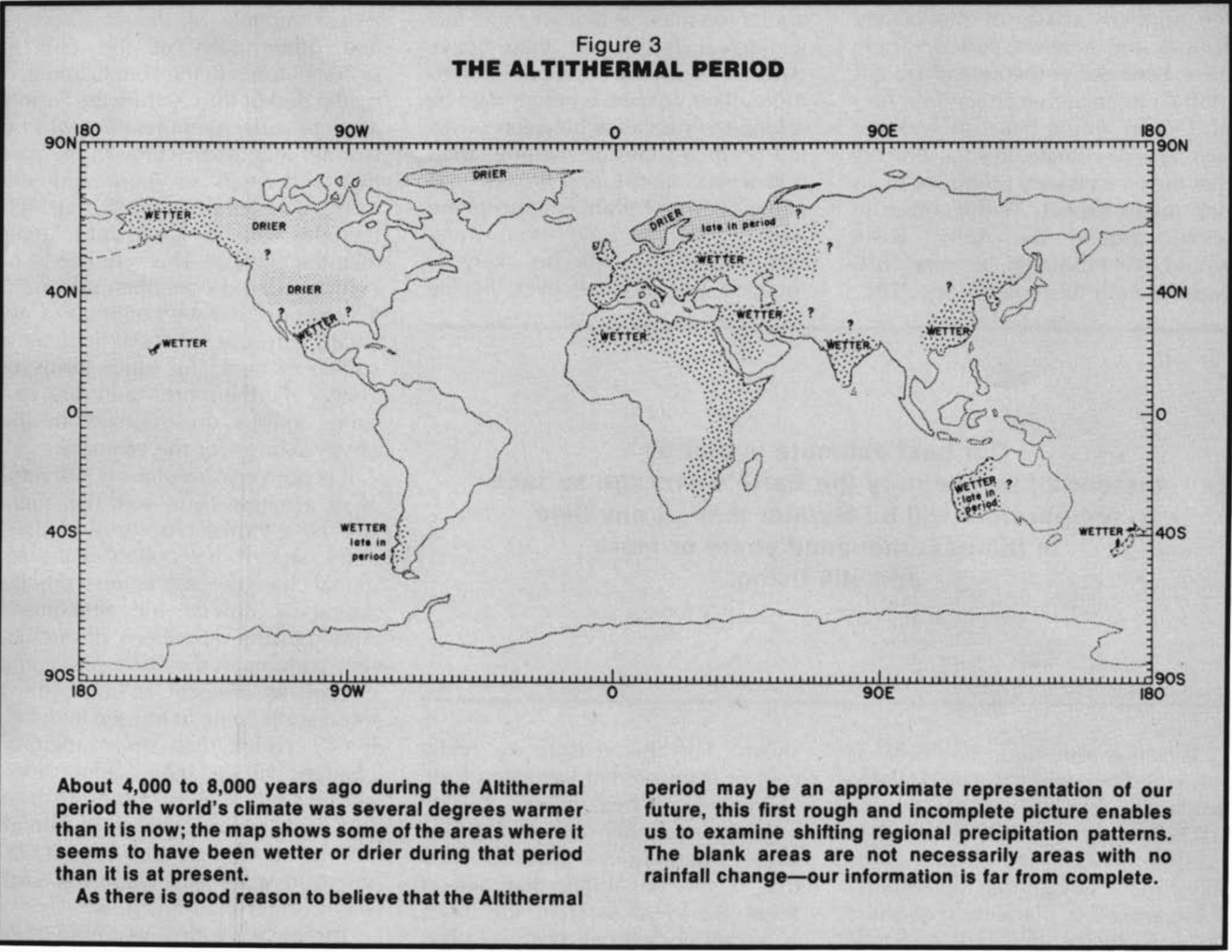
The accompanying map (Figure 3) shows some of the places where it seems to have been wetter or drier. The regions that are now subtropical deserts were apparently wetter than they are now: such areas as the Sahara in Africa, the Rajasthan in northwestern India, parts of Australia and parts of southwestern North America.
This is borne out by our knowledge of ancient history, which tells us that great cities once thrived in the deserts of North Africa and India and that the Fertile Crescent that included the valleys of the Tigris and the Euphrates Rivers was actually more fertile at the dawn of civilization. There is also anthropological evidence that the central United States (the “corn belt”) was then a prairie instead of the forest that existed when the white men arrived on the scene, which implies that less summer rainfall occurred during the Altithermal.
Are we, then, going to turn back the clock 4,000 or more years, climatologically speaking? Not necessarily.
The causes for that former warm period were different. It probably resulted largely from the variation in the Earth’s elliptical orbit around the Sun, and not from a change in the infrared absorptivity of the atmosphere. Even though the Earth may have been equally warm, the way in which the extra heat was supplied must have been different from extra heating due to the greenhouse effect. Thus, we would not expect the circulation patterns to be just the same for the Altithermal and the twenty-first century.
Nevertheless, our models do verify that a warmer atmosphere can evaporate more water from the oceans. Therefore, average rainfall will increase, and the monsoonal influence that brings rain to India and parts of Africa can be expected to be more intense. Thus, we have good reason to believe that the Altithermal may be an approximate representation of the future—at least, it is the best guess we have for now.
Fate of the Ice Masses
There are at least five distinct regimes of ice and snow:
- underground permafrost,
- the winter snow cover on land that melts in the summer,
- floating sea ice, or “pack ice,” some of which now survives in both polar regions,
- mountain glaciers that can occur at any latitude, and
- the massive ice sheets of Greenland and the Antarctic, which contain more than one-third of all the fresh water on Earth and have remained more or less intact for 2 to 3 million years in Greenland and 10 to 15 million years in the Antarctic [15].
In the event of a global warming that is accentuated in the polar regions, one would expect generally less snow cover on land, a partial melting of glaciers and a slow shrinkage of the areas now subjected to permafrost. However, the regimes that seem to be the ones to watch most carefully (and about which there is the greatest controversy) are the Arctic Ocean ice pack and the great ice sheets.
For the past million years at least, the Arctic Ocean has never been free of ice, though the edge of the ice pack does usually retreat enough in summer to allow shipping along the northern coasts of Alaska and Eurasia for a short period. There have been some theoretical studies of the influence that an ice-free Arctic Ocean would have on northern hemisphere climate. Results indicate that the effect is very pronounced, as one might expect. Temperatures in winter around the Arctic Basin would, it is estimated, be some 10°C warmer from this effect alone [16].
The real question, however, is how much warming it would take to entirely eliminate the Arctic ice pack. And if the Arctic Ocean once became free of ice, would it be likely to remain ice-free indefinitely? If the answer to the second question is “yes,” then eliminating the Arctic ice pack would constitute a change as near to an irreversible one as we can think of—and there are several reasons for suspecting that this could indeed occur [1, 16]. Unfortunately, our models are still not adequate to definitely answer this tantalizing question, though (among other studies) a joint effort between the National Center for Atmospheric Research and Ohio State University is being devoted to it.
Even though a melting of sea ice does not change sea level (a fact that can be easily verified by an experiment with a glass of water with ice cubes in it), the melting of glaciers and ice sheets on land would raise sea level. If all the glaciers melted, sea level would rise by about 0.6 meters, but the ice sheets contain enough mass to cause a 65 meter rise.
I must hasten to add that the ice sheets will certainly not disappear in the next few centuries, since they are far too massive and are more like geological formations than active parts of the climate system. Furthermore, their volume is determined by a long-term balance between snowfall on their tops and melting, ablation (evaporation), and breaking off at their edges. A warmer atmosphere will be able to hold more water vapor, and this will be likely to increase the snowfall over the ice sheets. For this reason we really cannot even predict the sign of the change of ice sheet volume.
There is another aspect of the ice sheets that requires attention, and that is the possibility that one of them, the West Antarctic ice sheet, is resting on bedrock below sea level. Some glaciologists have noted [17] that there is evidence for some relatively rapid fluctuations in this ice sheet in the past 20,000 years and have surmised that parts of it could slide into the sea if ocean water were to work its way underneath and serve as a kind of lubricant. That is, however, highly speculative, and the time scale of such an event would probably be beyond the period of our scenario.
Implications to Society
To briefly recapitulate, most of mankind’s activities lead to a warming of the Earth. The addition of carbon dioxide to the atmosphere from the extensive burning of fossil fuels is the largest single factor, since this gas absorbs infrared radiation from the surface that would otherwise escape to space.
Our best estimate of this warming—based on a variety of independent experiments with theoretical models of the atmosphere and other parts of the climate system—leads to the conclusion that by the end of this century the Earth’s average surface temperature will be warmer than at any time in the past thousand years or more and still rising. The temperature rise at high latitudes will be significantly larger than the average. This estimate is, of course, based on the uncertain assumption that we continue to escalate our use of fossil fuel as a source of heat and other forms of energy. Furthermore, there are still some serious uncertainties in the physical basis for the estimate.
It is not very useful to an individual or a nation to be told that there will be a global change of temperature, since what counts is the regional change—and regional precipitation is crucial for agriculture. Although the alterations of circulation patterns in the atmosphere and oceans as a result of a warming trend are difficult to foresee in detail, it is certain that some regional changes will be larger than the average change. This is borne out by a first look at the patterns of rainfall during the Altithermal Period (4,000 to 8,000 years ago) when the Earth was warmer than it is now.
The polar regions, warming more than the equatorial regions, will experience some fairly dramatic shifts of snow and ice cover and regions of permafrost, and the behavior of the Arctic Ocean ice pack seems to be an especially important consideration for practical as well as scientific reasons. Unfortunately, we cannot at present foresee what influence these changes will have on the great ice sheets of Greenland and the Antarctic, even though a small change in their volumes could significantly affect sea level.
Turning now to what this means to us all, we should note that we are facing a situation unprecedented in the history of mankind.* That is,
On the basis of the expectation that mankind will continue on its present course, we can predict that an external factor (anthropogenic input of carbon dioxide) will cause a major climatic change in the next few decades.
* A possible exception is the episode in ancient Egypt when Joseph advised the Pharoah of a 14-year cycle of climatic variation.
Like most predictions, this one is based on some uncertainties, and scientists cannot even agree on the degree of uncertainty. But, since the climate change is being caused by mankind, we could avert it if the nations of the world perceived it as “unacceptable” and did not wish to gamble on the outcome. Any action taken must be international and worldwide.
Scientists are, by their nature and training, cautious and unwilling to venture a prediction about the future unless they are confident that they have all the facts neatly filed away. Politicians (in the broad sense of the word) are quite accustomed to making decisions in the face of uncertainty, since they are forced to do so. The dialogue between scientists and politicians on the subject of fossil fuels, alternative energy sources and climate change has already begun. The U.S. National Academy of Sciences recently released its latest report, Energy and Climate [18], and the World Meteorological Organization (a U.N. agency), with headquarters in Geneva, is planning a world conference on climate, tentatively to be held in 1979.
Meanwhile, in another arena the nuclear versus fossil fuel debate is being hotly pursued while little attention (it would seem) is being paid to the carbon dioxide-climate question. Here the issues are perceived somewhat differently.
After agreeing that energy conservation should be a major national goal (who would dispute that?) and that solar energy in its various guises should be sought as an alternative energy source [19] (but will it pay for itself?), we must evaluate the agonizing issue of plutonium and proliferation of nuclear weapons in an age of terrorism. The tradeoffs here, as pointed out by John Holdren [20], are immensely complicated. Are we in the United States merely postponing an inevitable decision to move toward a long-term and sustainable nuclear economy involving the breeder reactor? Or will we turn to depend more heavily on coal, as President Carter has said in his energy policy statements?
What is clear is that no one nation or small group of nations can take the necessary action to change the course of events. The cause (burning of fossil fuels) is a worldwide phenomenon, and the effect (a warming) is global in extent. At present there exists no international agency or mechanism that can make a decision to take any action, much less a way of enforcing a decision to take action [21].
If we wait to let the atmosphere “perform the carbon dioxide experiment,” we will finally learn how well our models have served in making these predictions of climate change. But then it will be too late to do much about it, if the warmer Earth should prove to be a sadder Earth.
It is not at all clear whether a warmer Earth will be more or less livable, since it is most likely that some nations will be better off and others will be worse off. However, it is an economic verity that any major social readjustment is expensive, even if the end condition is an improvement.
The observation bears repeating: never in the history of mankind have we been faced with an environmental problem whose solution requires so many important decisions at the international level.
Together, we make the world safer.
The Bulletin elevates expert voices above the noise. But as an independent nonprofit organization, our operations depend on the support of readers like you. Help us continue to deliver quality journalism that holds leaders accountable. Your support of our work at any level is important. In return, we promise our coverage will be understandable, influential, vigilant, solution-oriented, and fair-minded. Together we can make a difference.

